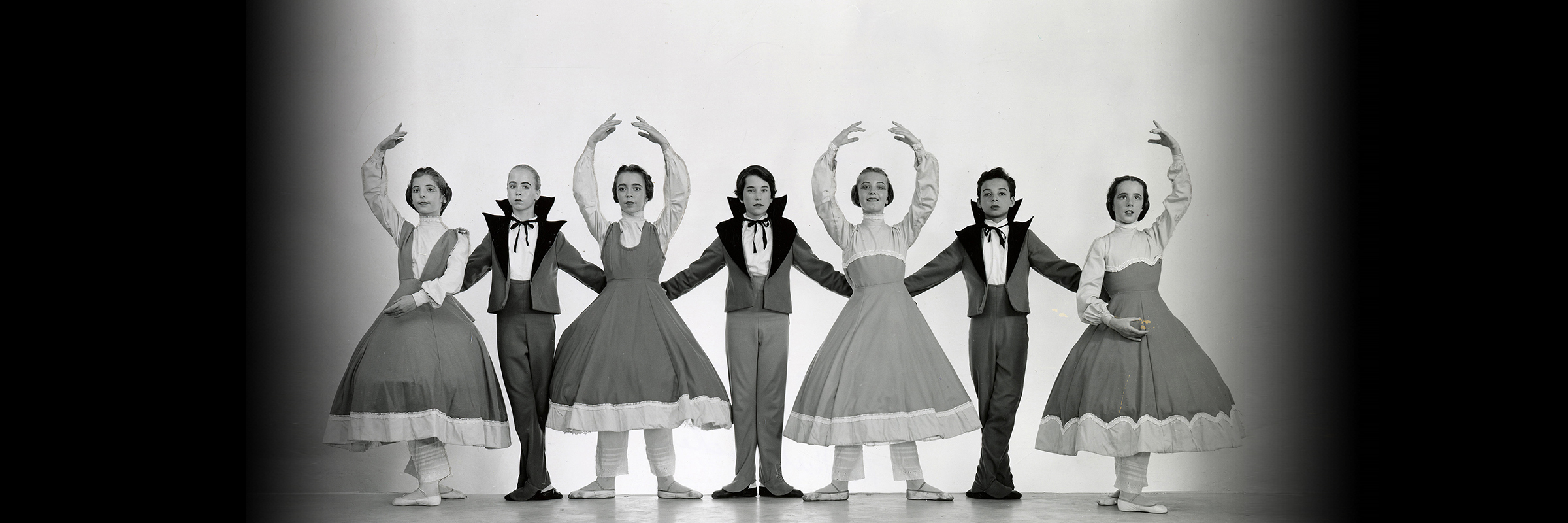Lew Christensen’s 1954 Nutcracker
Featuring Designs by Children’s Book Illustrator Leonard Weisgard
Ten years after Willam Christensen’s Nutcracker premiered, Lew choreographed a new production set in Victorian America in the 1850s. Leonard Weisgard, a children’s book illustrator, designed the scenery and costumes.
“This production was more childlike than Bill’s,” says Nancy Johnson, former administrative director of San Francisco Ballet School and the first Sugar Plum Fairy in the 1954 production. “It had a storybook feeling. The costumes for the children and the mothers in the first act looked like they belonged on paper dolls. Even the tree looked like it was out of a children’s book rather than like a real tree.” The tree appeared flat as it grew, rather than three-dimensional. The audience was nevertheless enthralled.
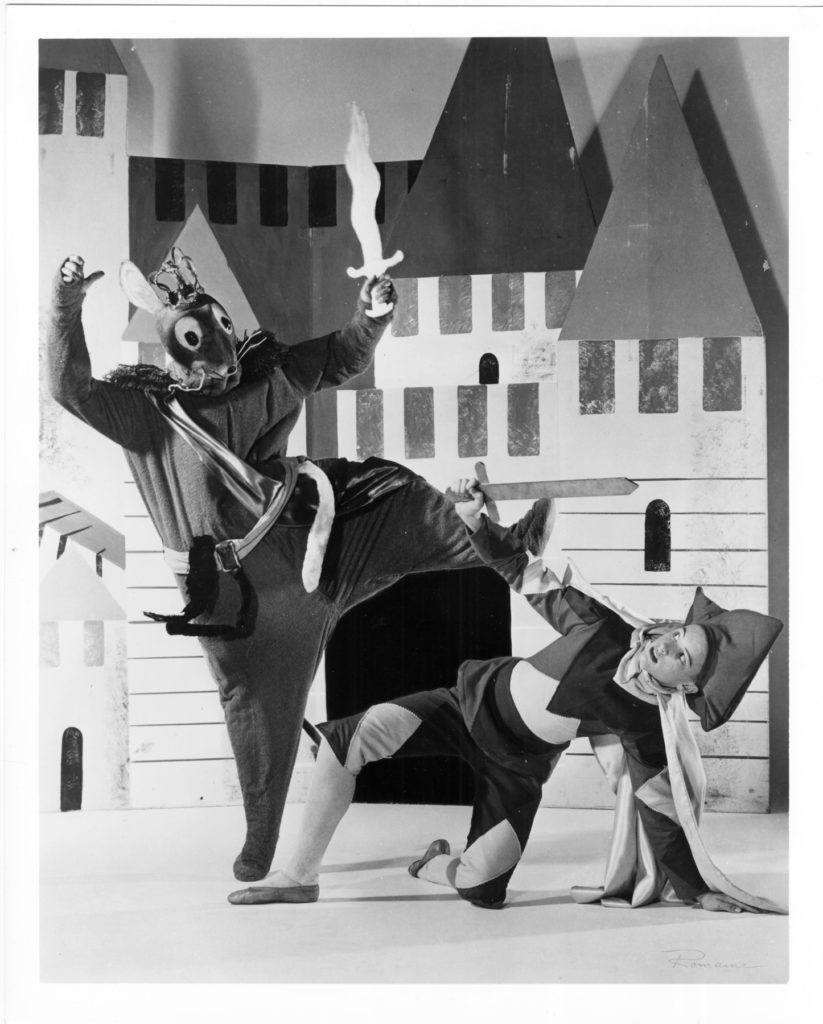
Most of the costumes were spare looking: free of decoration, and geometrical in design. The geometric motif was carried through to the set, which featured an elaborate Candy Kingdom dominated by candy cane arches and a gingerbread house.
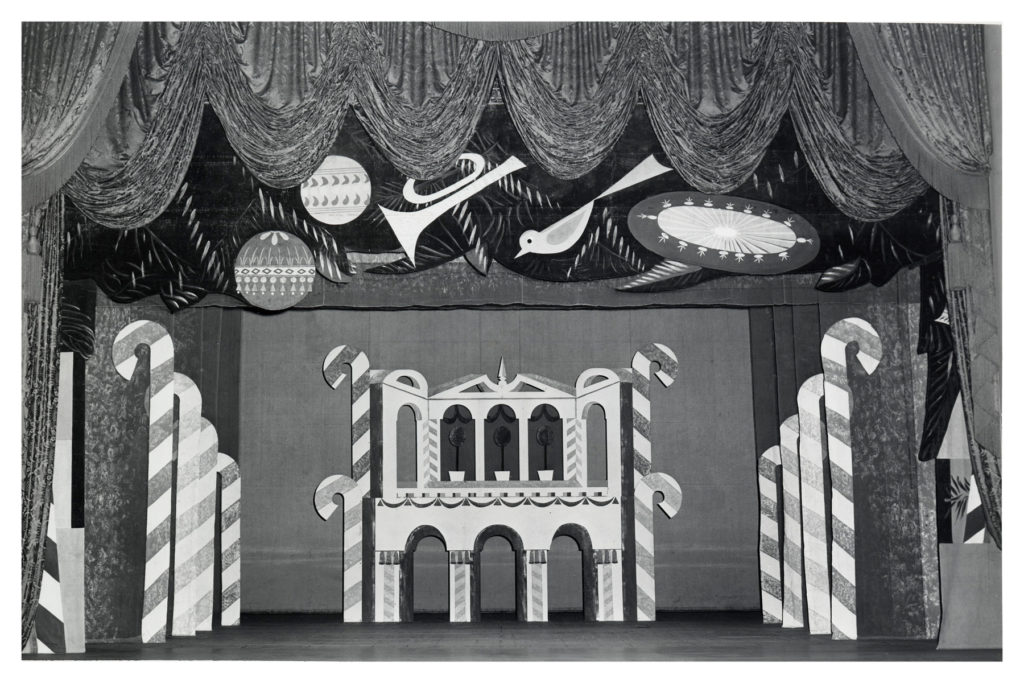
It was clear from the opening moments that this was a completely reconsidered Nutcracker. The ballet now began in Drossemeyer’s workshop, where the character of the nephew—who later became the Nutcracker Prince—was introduced. Clara was performed by a youngster, and no longer danced on pointe. A Dancing Bear was added to the first act party scene, and toy soldiers replaced the gingerbread men.
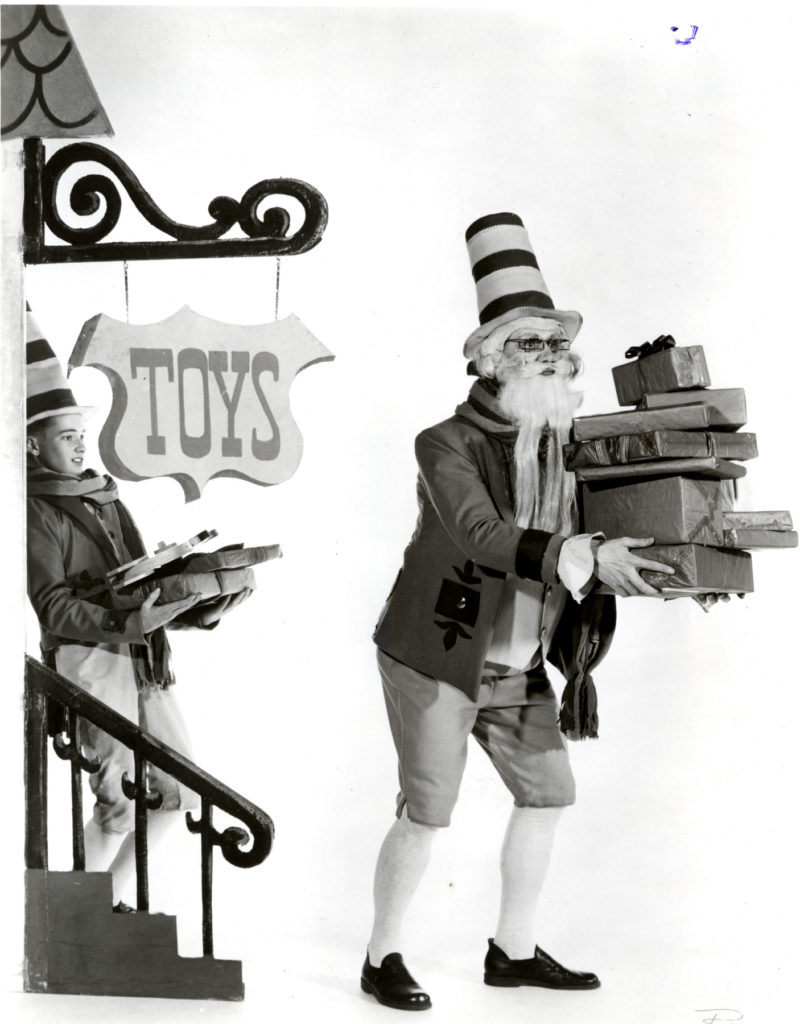
The second act included the traditional Russian mime scene in which the Nutcracker Prince relate the story of his battle with the Mouse King, and Christensen choreographed all new divertissements for the inhabitants of the Candy Kingdom. Among the highlights were the Dance of the Chocolate Spaniards and the Licorice Bull, performed by a torero, senorita, and toro; the Disappearance of the Turkish Delight, a magic trick similar to the usual Arabian dance, in which a sultry woman vanishes before the audience’s eyes; and the Ribbon Candy Dance, an athletic dance performed by a soloist as he (or she) manipulated long ribbons.
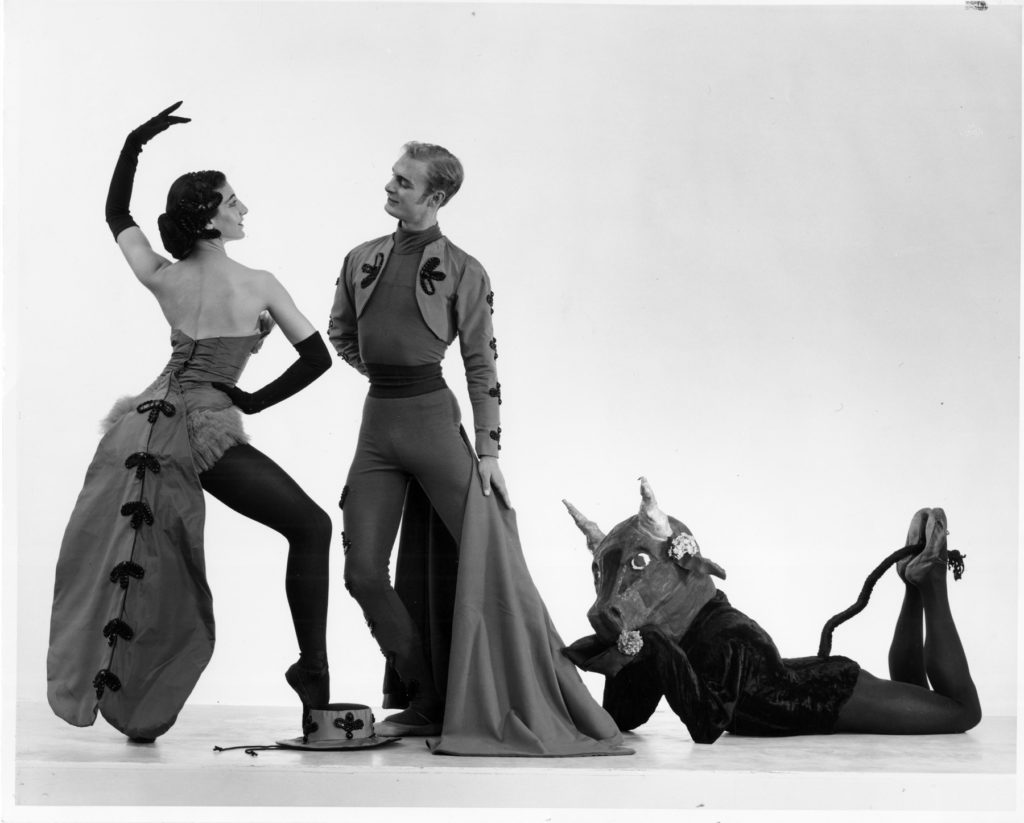
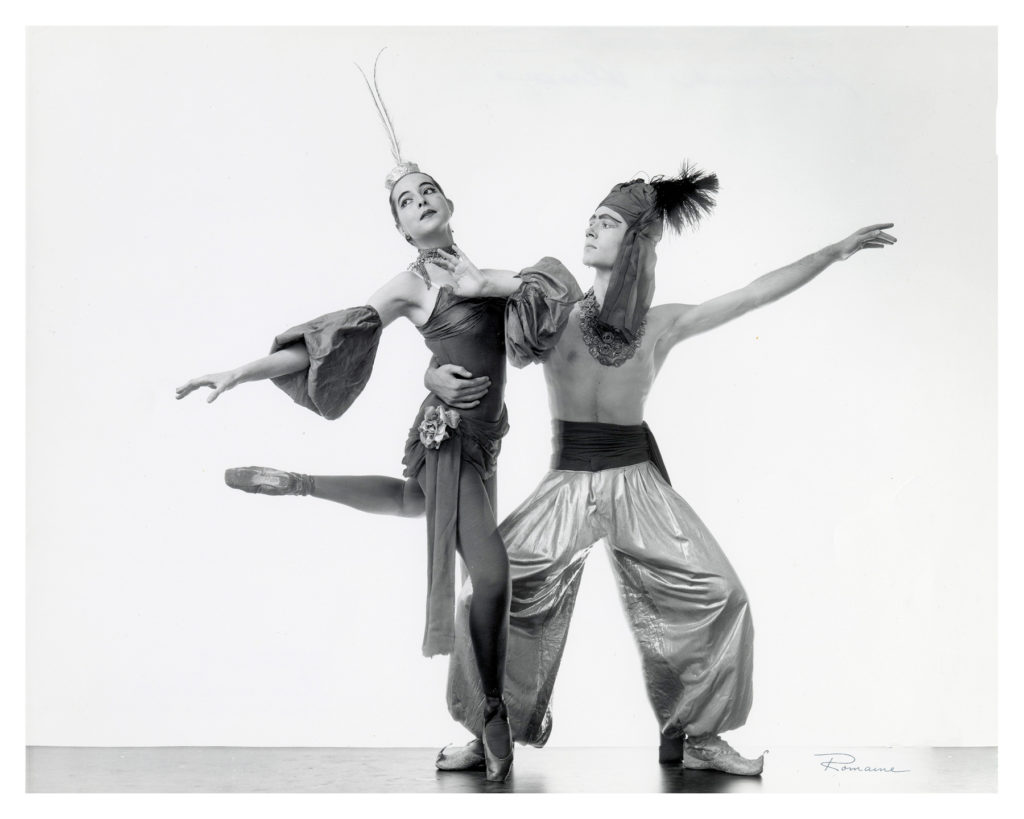
“Lew was usually working with dancers on their way up—he was always losing dances to New York back then—and he used his choreography as a teaching tool,” says Johnson. “What’s amazing is how sophisticated and difficult the dances are for the Snowflakes and Flowers. We tend to think that young students today have more facility. But these dancers are as much of a challenge now as they were in the 1950s.”
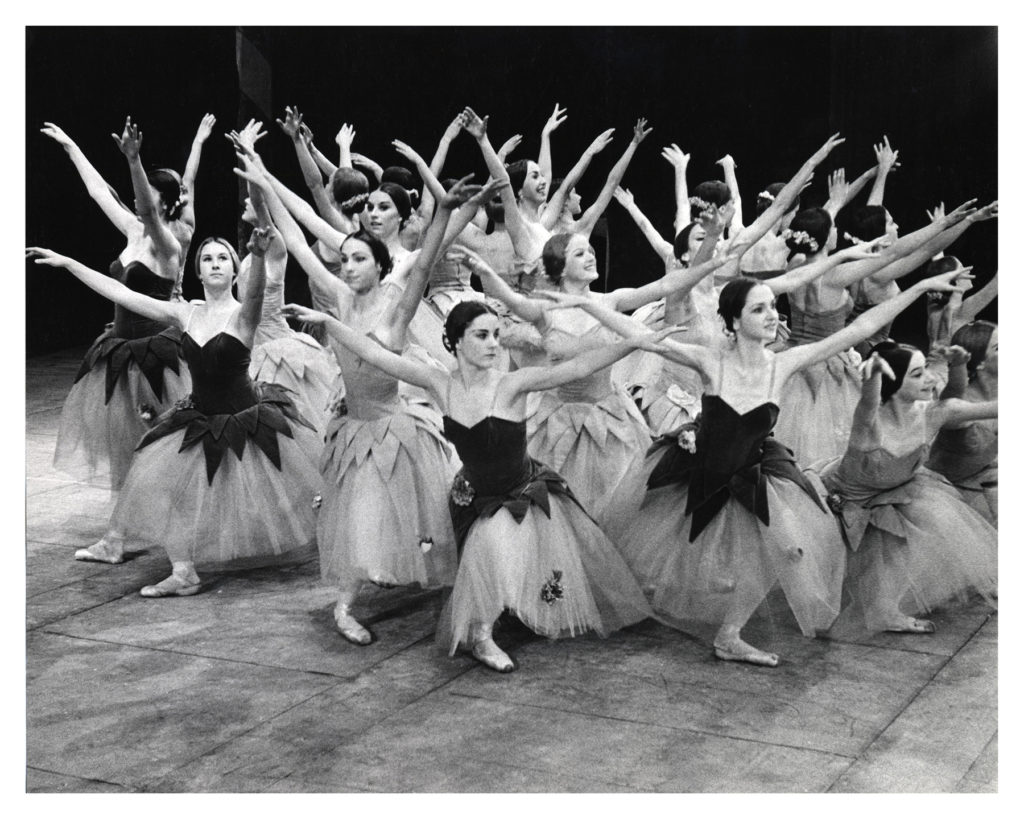
By Sheryl Flatow
Header image: Mary Tobias, Judith Ayres, Patsy Prager, Paula Opperman, Mimi Wallace, Joey Panganiban, and Shari White in Lew Christensen’s The Nutcracker. (© Romaine. Photo courtesy SFMPD.)



